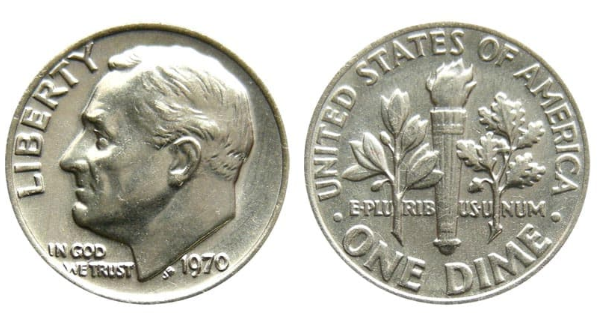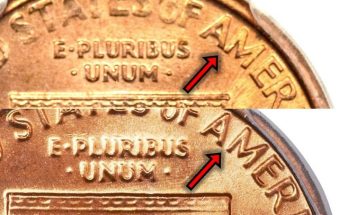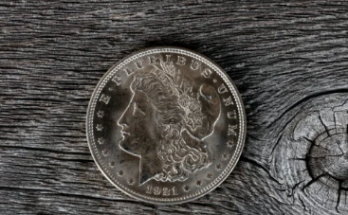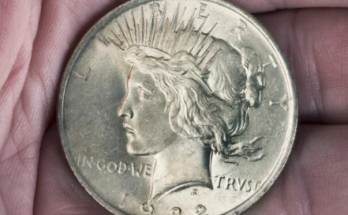Table of Contents
You may think that because this coin is fairly common, it doesn’t hold that much value. But the reality is that many Roosevelt dimes—especially those minted in 1970—are incredibly valuable because of errors and rare features.
Today, we’ll discuss the heartwarming story behind the minting of the Roosevelt dime, as well as much a 1970 dime is worth in the modern age. Read on to learn more about these!
1970 Dime Value Details
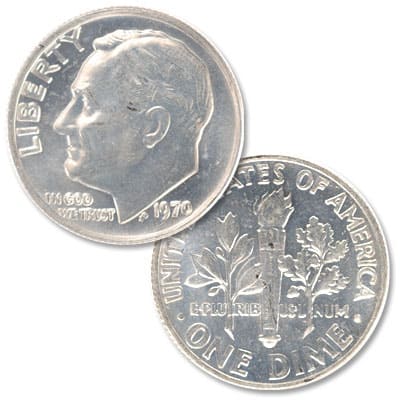
- Category: Roosevelt Dimes
- Mints: Philadelphia, Denver
- Total mintage: 1,100,512,100
- Obverse designer: John R. Sinnock
- Reverse designer: John R. Sinnock
- Design year: 1946
- Edge: Reeded
- Diameter: 17.91mm
- Content: Nickel-clad copper (75% copper, 25% nickel)
- Weight: 2.27g
Although Roosevelt dimes were originally made of 90% silver and 10% copper, the 1970 dime’s composition is 75% copper clad with 25% nickel.
The obverse of the coin shows a sideways-facing portrait of Franklin D. Roosevelt, the 32nd president of the United States of America and a prolific figure that saw the country through World War II. Below his neck are the initials JS, which stands for John Sinnock, the coin’s designer.
Underneath, you’ll see “In God We Trust” written, as well as the year 1970. Denver-minted coins will have a small “D” mint mark right above the date. The left-hand side of the obverse also features the word “LIBERTY” written in an arc.
The reverse, on the other hand, was designed to symbolize the victory of the Allies during the war, bringing great freedom and pride to Americans everywhere.
The surface of the reverse depicts a lit-up torch surrounded by olive and oak branches. Together, they paint a picture of strength, peace, and victory.
The US motto “E Pluribus Unum” is written in between the torch and branches. Around the reverse, “United States of America” and “One Dime” are written in an arc formation.
In 1970, the Philadelphia and Denver mints produced these dimes for the regular strike. The San Francisco mint, on the other hand, was only assigned to produce a few of these dimes as proofs, aka coins that would never go into circulation.
Because over one billion dimes were minted in 1970, these coins aren’t all that rare. Instead, collectors hunt down 1970 dimes with mint errors and a Full Torch designation. These dimes are far more valuable than the usual circulated 1970 dime.
Also Read: Top 15 Most Valuable Indian Head Penny Worth Money
1970 Dime Value Chart
| 1970 Dime Value Chart | |||||
| Mint Mark | Good | Extremely Fine | AU58 About Circulated | MS66 Gem Uncirculated | MS67 Superb Gem Uncirculated |
| 1970 Dime Value for No Mint Mark (P) | $0.15 | $0.15 | $0.25 | $75
Full Torch: $545 |
$565 |
| 1970 Dime Value for “D” Mint | $0.15 | $0.15 | $0.25 | $15
Full Torch: $95 |
$75 |
1970 Dime Values and Varieties Guides
1970 Dime Value for No Mint Mark (P)
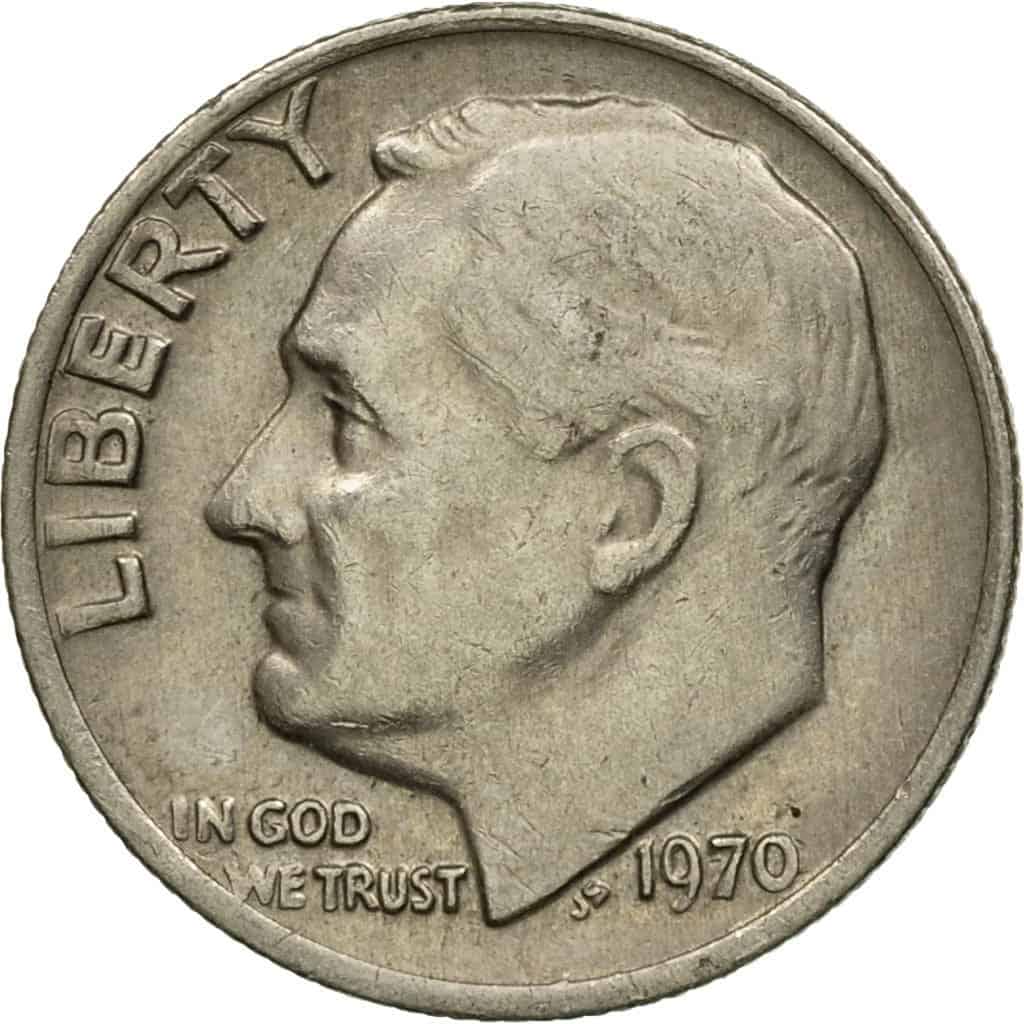
- Type: Roosevelt Dimes
- Edge: Reeded
- Mint mark: No mint mark (P)
- Place of minting: Philadelphia
- Year of minting: 1970
- Face value: $0.10
- $ price: $0.15 to $565
- Quantity produced: 345,570,000
- Designer: John R. Sinnock
Over 345 million dimes were struck at the Philadelphia mint in 1970. You’ll know that these are made in Philly because they won’t have a “P” mint mark (it was only in 1980 onwards that the “P” mark was struck on the Philly-made dimes).
In circulated condition, the 1970 dime value doesn’t go that far from its face value, costing about $0.15 whether the condition is good or extremely fine.
Uncirculated dimes, on the other hand, are valued anywhere between $1 (for MS60 coins) to $565 (for MS67 ones).
That said, the prices can go way higher if there are any mint errors on the 1970 dime. For example, an MS66 1970 dime is valued at around $15 today. But in 2013, one MS66 dime was auctioned off for $137.50 because of a doubled die error.
One thing that can increase the price of a 1970 dime with no mint mark is if NGC gives it a Full Torch (FT) designation.
As you may remember, the reverse of the 1970 dime shows a torch. An MS FT 1970 dime means that both pairs of bands at the top and bottom of the torch are fully separated by defined lines. This makes the coin much rarer, and therefore more valuable.
To give you an idea of how much a Full Torch 1970 dime is worth, an MS65 dime is valued at $10. Meanwhile, an MS65 FT coin can be sold for $275.
1970 Dime Value for “D” Mint Mark
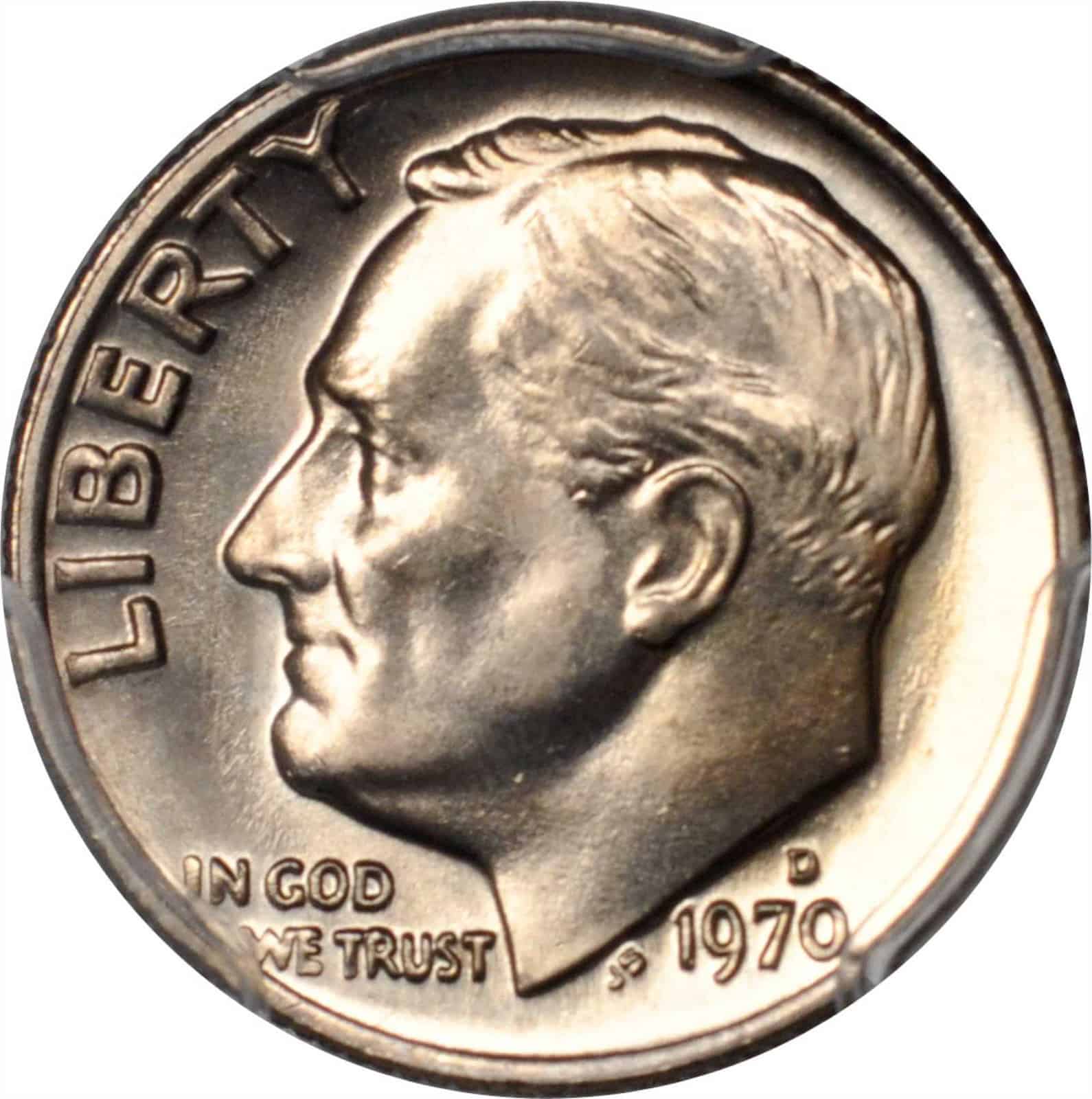
- Type: Roosevelt Dimes
- Edge: Reeded
- Mint mark: D
- Place of minting: Denver
- Year of minting: 1970
- Face value: $0.10
- $ price: $0.15 to $840
- Quantity produced: 754,942,100
- Designer: John R. Sinnock
The Denver mint struck over 750 million dimes in 1970—more than twice the number of dimes created at the Philadelphia mint. That means these coins with the “D” mint mark are more common, so you should expect their value today to be slightly lower than coins with no mint mark.
1970-D circulated coins are valued at around the same price as those minted in Philly, ranging from $0.15 for good condition coins to $0.25 for dimes that are about circulated (MS50 and above).
However, uncirculated coins are priced a bit lower. An MS66 dime from Denver may be worth around $15 compared to its Philly counterpart, which can sell for about $75.
That said, errors can boost the price of a 1970-D coin. An MS61 coin is valued at $1.50 but has been known to sell for upwards of $195 for errors like being struck only on the clad layer. This is something that occurred in an auction back in 2014.
Another factor that can increase the prices of these dimes is the coveted FT designation. An MS67 1970-D dime is valued at $75. But with a Full Torch grade, the value rises to $225.
History of the 1970 Dime
At 63, Franklin D. Roosevelt passed away in 1945. He was one of the most loved presidents in American history, having carried the nation on his shoulders during both the Great Depression and World War II when the Allies rose victorious.
His death was one of the most heartbreaking losses in the country’s history, and it only felt right to honor his name and legacy in some way. So, the US Treasury started to hatch plans to mint a newly designed coin with the portrait of the well-respected FDR.
The coin they chose to strike with his portrait was none other than the humble dime. It was perfect because Roosevelt, who struggled with polio, started a non-profit in 1938 called the March of Dimes—an organization that works to prevent polio by promoting the health of mothers and babies.
Thus, the Roosevelt dime that depicted this iconic president’s profile and the torch that symbolized American victory over the war was born. It was designed by none other than John Sinnock, the US Mint’s Chief Engraver.
Of course, the Roosevelt dime had its fair share of controversy over the years as well. Some believed that the design was stolen from a sculptor named Selma Burke, but there’s no real evidence of this.
There was also a theory that the “JS” initials on the coin didn’t stand for John Sinnock, but instead Joseph Stalin, the Soviet leader with strong communist ideals. It was nothing more than a conspiracy theory, but the US Mint issued an official statement to deny these claims.
Today, it’s incredibly easy to find Roosevelt dimes. The real challenge lies in looking for those in mint-state, uncirculated conditions and have rare errors.
1970 Dime Grading
The best way to be really sure of the value of your 1970 Roosevelt dime is to subject it to coin grading. It might cost hundreds or even thousands of dollars to hire someone to do it for you, so you might be better off learning the practice of coin grading yourself.
For Roosevelt dimes—as well as most other coins—the valuable pieces lie in the uncirculated coins that are in near-perfect condition. Here are some signs that point to an uncirculated and likely highly valuable 1970 dime:
- Bright and shiny luster, as if it’s never been used
- The texture of Roosevelt’s face is unbroken and remains lustrous (this area is very prone to wear and tear)
- The oak and olive leaves as well as the flames of the torch in the reverse of the coin are well-defined and haven’t been smoothed down
Check out this video by CoinStudy for a more in-depth lesson on how to grade Roosevelt dimes:
1970 Dime Errors
1. 1970 Proof Dime No S Mint Mark Error
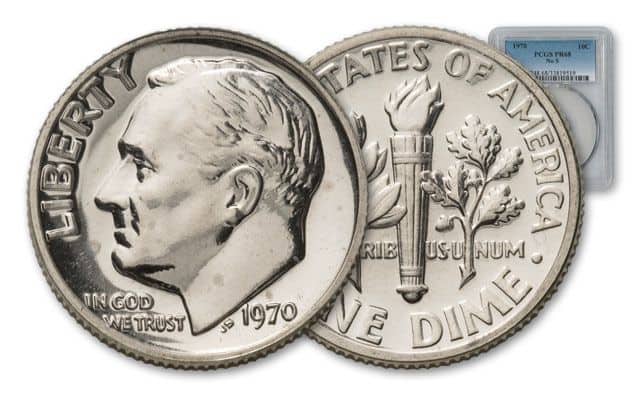
Although the San Francisco mint did not produce dimes in 1970 for the regular strike, they were in charge of creating proofs. When a coin is minted in San Francisco, it always has an “S” mint mark on it. But in 1970, over 2,000 Roosevelt dimes were made in San Francisco without this mark.
A proof dime made in San Francisco but with no S mark can be valued anywhere from $500 to a whopping $1,600. Although these dimes were proofs and never entered circulation, lucky collectors can sometimes stumble upon them in vintage proof sets.
2. 1970 Dime Struck on Philippine Aluminum Error
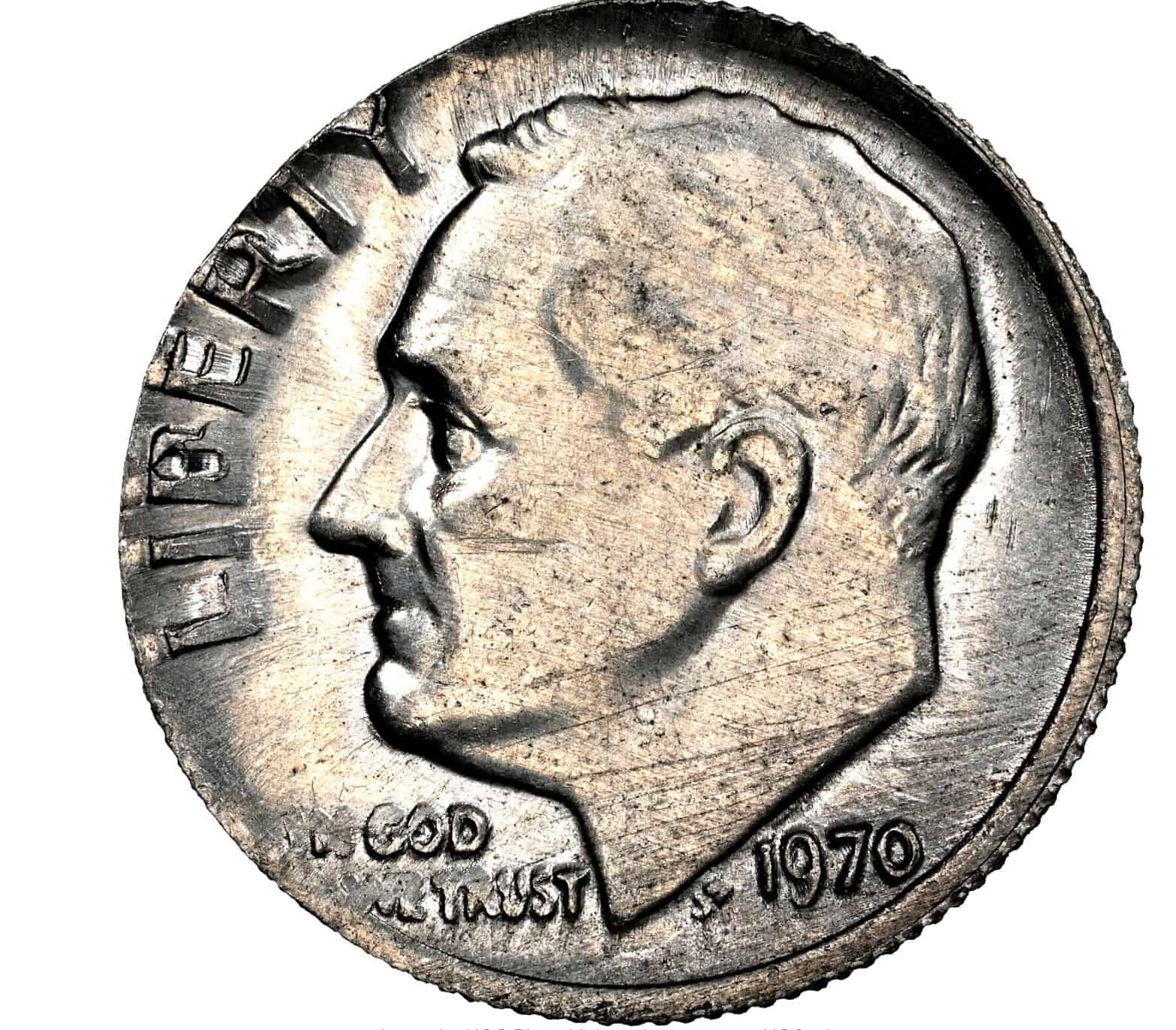
Another popular 1970 dime error is that of having been printed on an aluminum planchet instead of the usual copper-nickel one. In 1970, the US Mint produced Philippine coins on aluminum. Because of this, the mint accidentally struck the 1970 dime on some leftover aluminum planchets.
1970 dimes with this error are incredibly lightweight. You’ll also notice that the design of the US dime doesn’t quite fit perfectly onto the slightly smaller Philippine aluminum planchet.
These coins are very rare and immensely valuable. You might be able to sell them for over $1,000.
3. 1970 Dime Double-Strike Error
After a planchet is struck with a die in the mints, it’s meant to be ejected from the feeder. But sometimes, the machine malfunctions and can’t get the planchet out properly. The result is that it gets struck another time by the die, creating the double strike error.
A double-strike error is usually noticeable because you’ll find a faint second image on the surface of the coin. The more extreme the error, the more valuable the coin will be.
4. 1970 Dime Off-Center Strike Coin
An off-center 1970 dime will look as if the die was misaligned with the planchet the moment it was struck.
Sometimes, the misalignment will be subtle, so it looks like the design isn’t smacked in the center of the coin. But other times, it’s more extreme—half the design could be missing, while the other half remains blank.
An off-center struck dime could cost anywhere between $5 and $35.
In this video, Couch Collectibles talks about more errors you might find in the Roosevelt dimes:
1970 Dime Value FAQs
What dimes are worth millions?
Although the 1970 dime can be worth thousands if it’s rare or made with a mint error, it’s not exactly one of the most valuable dimes in history because they were made in recent years.
Dimes that are worth millions of dollars include those with old designs made in the 1800s and Seated Liberty dimes that were struck in the mid-1800s. Proof-like coins from two centuries ago can sometimes be valued at hundreds of thousands of dollars, especially when they have rare errors.
What is a 1970 No S Proof dime?
The 1970 No S dimes are coins that the San Francisco mint accidentally struck without its signature “S” mint mark. These coins were never released for public circulation, so existing ones today are considered proof coins.
What year of dimes are rare?
Popular dimes that are rare include the 1964 and 1965 transitional coins, which were made with alloys not meant for that specific mintage.
Other rare dimes include those without mint marks, like the 1970 No S dimes and the 1982 No P dimes (Philadelphia started minting dimes with a “P” mint mark in 1980).
